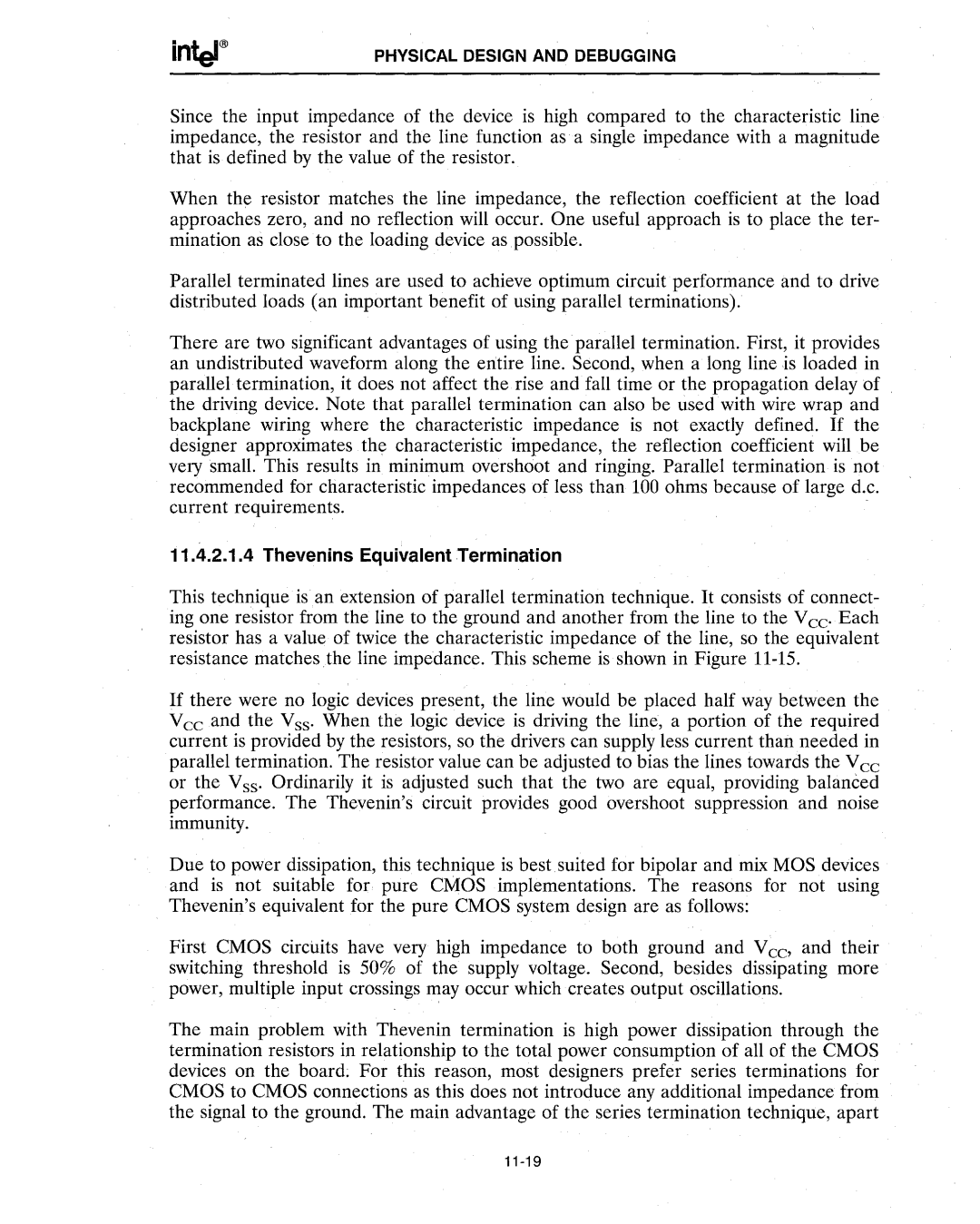
PHYSICAL DESIGN AND DEBUGGING
Since the input impedance of the device is high compared to the characteristic line impedance, the resistor and the line function as a single impedance with a magnitude that is· defined by the value of the resistor.
When the resistor matches the line impedance, the reflection coefficient at the load approaches zero, and no reflection will occur. One useful approach is to place the ter- mination as close to the loading device as possible.
Parallel terminated lines are used to achieve optimum circuit performance and to drive distributed loads (an important benefit of using parallel terminations).
There are two significant advantages of using the' parallel termination. First, it provides an undistributed waveform along the entire line. Second, when a long line .is loaded in parallel termination, it does not affect the rise and fall time or the propagation delay of the driving device. Note that parallel termination can also be used with wire wrap and backplane wiring where the characteristic impedance is not exactly defined. If the designer approximates thy characteristic impedance, the reflection coefficient will be very small. This results in minimum overshoot and ringing. Parallel termination is not recommended for characteristic impedances of less than 100 ohms because of large d.c. current requirements.
11.4.2.1.4 Thevenins Equivalent Termination
This technique isan extension of parallel termination technique. It consists of connect- ing one resistor from the line to the ground and another from the line to the Vcc. Each resistor has a value of twice the characteristic impedance of the line, so the equivalent resistance matches the line impedance. This scheme is shown in Figure
If there were no logic devices present, the line would be placed half way between the Vcc and the Vss. When the logic device is driving the line, a portion of the required current is provided by the resistors, so the drivers can supply less current than needed in parallel termination. The resistor value can be adjusted to bias the lines towards the Vcc or the Vss. Ordinarily it is adjusted such that the two are equal, providing balanced performance. The Thevenin's circuit provides good overshoot suppression and noise immunity.
Due to power dissipation, this technique is best suited for bipolar and mix MOS devices and is not suitable for pure CMOS implementations. The reasons for not using Thevenin's equivalent for the pure CMOS system design are as follows:
First CMOS circuits have very high impedance to both ground and Veo and their switching threshold is 50% of the supply voltage. Second, besides dissipating more power, multiple input crossings may occur which creates output oscillations.
The main problem with Thevenin termination is high power dissipation through the termination resistors in relationship to the total power consumption of all of the CMOS devices on the board: For this reason, most designers prefer series terminations for CMOS to CMOS connections as this does not introduce any additional impedance from the signal to the ground. The main advantage of the series termination technique, apart
